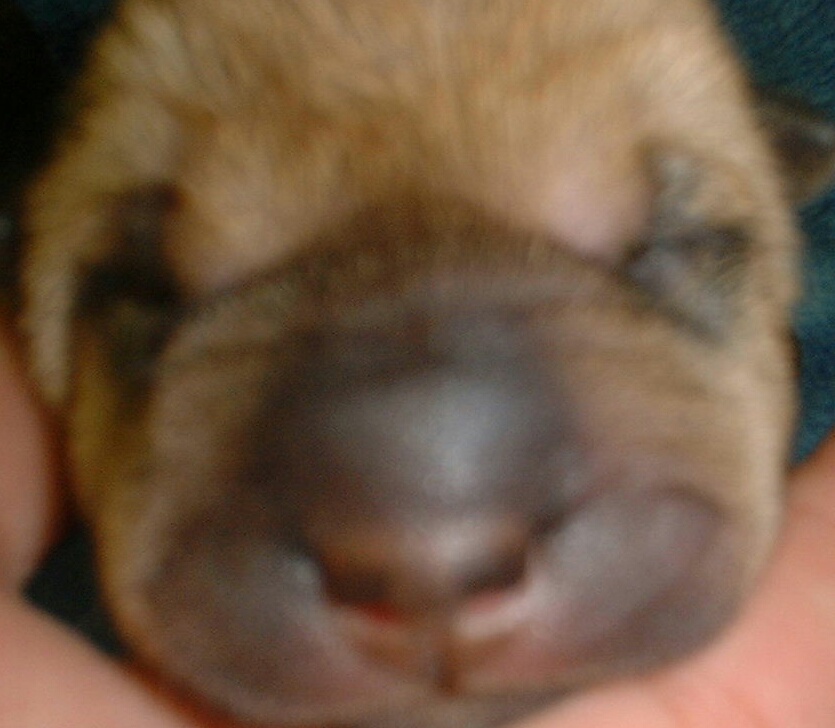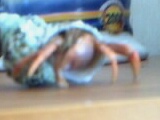| Home Page
What's New Page
Most recent pictures of our clan
Tim and Jen's Story
Brittani's Page
Richard's Page
Tim and Taylor's Story
Tim and Taylors Page
The Fisher Pet Page
Favorite Fisher Photos
Favorite Fisher Photos part 2
Favorite Fisher Photos part 3
Page for Heather-New
Slide Show Page
Sign our new Guestbook
Beautiful Twin Poetry
Contact Page
Favorite Links Page
|
|
Here you can meet the Fisher pets!!!
Here at the Fisher household we have three pets.
Our oldest is Hermie, Hermie is a hermit crab approaching his third birthday.(We cant believe we have kept him alive that long)
Our second pet is "Jimmy", Jimmy is a Jenday Conure who hatched on 5-1-00, and whom we adopted in early June of 2001(his mommy was moving into a new apartment that did not allow screaming birds). He is a very bad spoiled boy who screams all the time! He can say "what" and barks like a dog. He is slowly warming up to us though, from what I have read we have to be accepted into his flock. As of right now I am still not making it as a member of the flock.
Our third pet was born on 5/23/01 and we are still waiting her arrival. She is a Chinese Shar Pei, we have chosen to name Doll Face(used to be the nick name Tim called me). We get weekly pictures of her and have to admit she is the prettiest little girl!
|
 Here is Our very Bad Jimmy
Here is Our very Bad Jimmy
|
|
Some Jenday Conure Facts
Conures can be found in most of South and Central America. Some species are also well represented in the West Indies, as well as parts of Mexico. In the wild conures are friendly, peaceful birds and seldom fight with each other. They live together in groups of twenty or more birds, even during the mating season, and feed on various seeds, fruits, and insects.
The Jenday has a yellow head, with an orange front. It has green wings. The Jenday has the white skin patch around the eye.
The Jendayas are very playful and entertaining birds, and can be trained easily. Some say the bird is nervous and noisy. Ours is a very noisy little fellow!
|
|
Some Facts about Shar Pei's
The origin of the Chinese Shar-Pei can be traced to the province of Kwun Tung and has for centuries existed in the southern provinces of China. These dogs helped their peasant masters in various tasks such as herding cattle, guarding the home and family, and have proven themselves to be qualified hunters of "wild game, usually wild pigs."
The Shar-Pei is believed to have shared a common origin with the smooth-coated Chow-Chow because of the blue-black mouths and tongues, possibly the Great Pyreness, a source of the double dewclaws, and the Tibetan Mastiff. It was believed in ancient times that the dark mouth of the Chow-Chow, exposed when barking, helped to ward off evil spirits. The first Shar-Pei may have appeared as a mutation. The Shar-Pei when translated means "sand-skin" or "shark skin." This uniquely rough, loose, prickly coat enabled the Shar-Pei to wriggle out of its opponents grasp while fighting in the dog pits. The coat when stroked against the grain may be abrasive, producing a burning, itching sensation. Their tail is carried over their backs on either side exposing the anus.The first tail set is a tightly-curled tail, a "coin" tail. The second tail set is the loose curl, and third is carried in an arch over the back. The Shar-Pei with his tail sticking out straight or between his legs was thought to be cowardly. The tail should denote bravery.
While viewing the body head on, if the toes were slightly turned out this was thought to help the dog with balance according to old-time dog-fighting fanciers. The Chinese crawling dragon with his feet pointed east and west was considered a sign of strength. Because of these poor breeding practices many of the Shar-Pei have bad fronts. A dog with straight forelegs is correct.
Incidentally, any dog in China that protects property is called a fighting dog, whereas in Canada and the United States they are referred to as guard dogs.
Following the establishment of the Peoples' Republic of China as a communist nation, the dog population was virtually wiped out. If not for the efforts of Matgo Law of Hong Kong, the Shar-Pei would not be here today. Due to his dedication to the breed, a small number of Shar-Pei were brought to the United States in the 1960's and early 70's. In 1974 American and Canadian fanciers answered Matgo's appeal for help and in 1976 the first Shar-Pei was registered. The foundation stock brought over from Hong Kong were of poorer quality then the Shar-Pei we see today. In August of 1991 the Shar-Pei officially completed the requirements for recognition by the American Kennel club and was placed in the Non-Sporting Group. In 1992 the Canadian Kennel Club also offically recognized and grouped the Shar-Pei in group 6, Non-Sporting events. Since that time several Shar-Pei are now and continuing to become CKC and AKC champions.
|
 This is Doll Face 2 days old.
This is Doll Face 2 days old.
|

HERMIT CRAB FACTS
Common Names: Land Hermit Crab
Scientific Name: Coenobita clypeatus
Distribution: Florida, West Indies, South America
Size: Up to 4 inches in very large examples, usually smaller though.
Temperament: Usually good tempered but can pinch hard when handled.
Hardiness: Very hardy when properly set up and maintained.
Sexing: No dimorphisism, cannot be sexed when in shell.
"Captive Care"
Food: Commercial hermit crab chow, chicken scratch, corn meal, peanut butter, apples, pears, bananas, lettuce, other fruits and vegetables, toast, occasionally supplement in small amounts with a vitamin/calcium powder. Should be fed a small amount every other day for optimum health.
Housing: A 10 gallon aquarium with a screen top or a similarly sized enclosure is adequate for keeping a colony of crabs. Use a sand substrate. Landscape with various select pieces of driftwood, branches, cork bark, rocks and a variety of switching shells for the animals as they grow. For shop set ups and large colonies, create a back wall of siliconed rocks for climbing and place 1 inch of water on the bottom of tank, this will cause the crabs to stay on the rock wall and in full view. Feeding dishes can also be siliconed to the back wall. This set up is easily cleaned by rinsing and siphoning the bottom water. Small bird cages and custom wire enclosures also work well with these crabs.
Water: Should be provided with a shallow easily accessible water crock for drinking, soaking, and defecation.Clean as often as needed. Use only dechlorinated - dechloramined water at all times.
Temperature/Humidity: 65 F - 85 F room temperature. Humidity is provided by water section and occasional misting of enclosure.
Lighting: Full spectrum lighting/U.V. radiation is recommended not necessary for long term maintenance of Hermit Crabs, standard aquarium lighting is sufficient.
Heating: Under normal conditions supplementary heat is not required by Hermit Crabs.
Notes: For long term success with Hermit Crabs, care and attention must be given to the quality of the water (i.e., frequent changes and condition to remove chlorine and chloramine).
|
|

